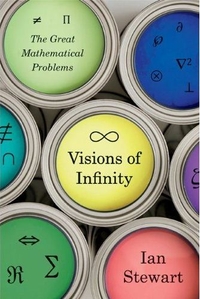Anyone who thinks math is dull will be delightfully surprised by this history of the concept of symmetry. Stewart, a professor of mathematics at the University of Warwick (Does God Play Dice?
), presents a time line of discovery that begins in ancient Babylon and travels forward to today's cutting-edge theoretical physics. He defines basic symmetry as a transformation, "a way to move an object" that leaves the object essentially unchanged in appearance. And while the math behind symmetry is important, the heart of this history lies in its characters, from a hypothetical Babylonian scribe with a serious case of math anxiety, through Évariste Galois (inventor of "group theory"), killed at 21 in a duel, and William Hamilton, whose eureka moment came in "a flash of intuition that caused him to vandalize a bridge," to Albert Einstein and the quantum physicists who used group theory and symmetry to describe the universe. Stewart does use equations, but nothing too scary; a suggested reading list is offered for more rigorous details. Stewart does a fine job of balancing history and mathematical theory in a book as easy to enjoy as it is to understand.
Line drawings. (Apr.)


